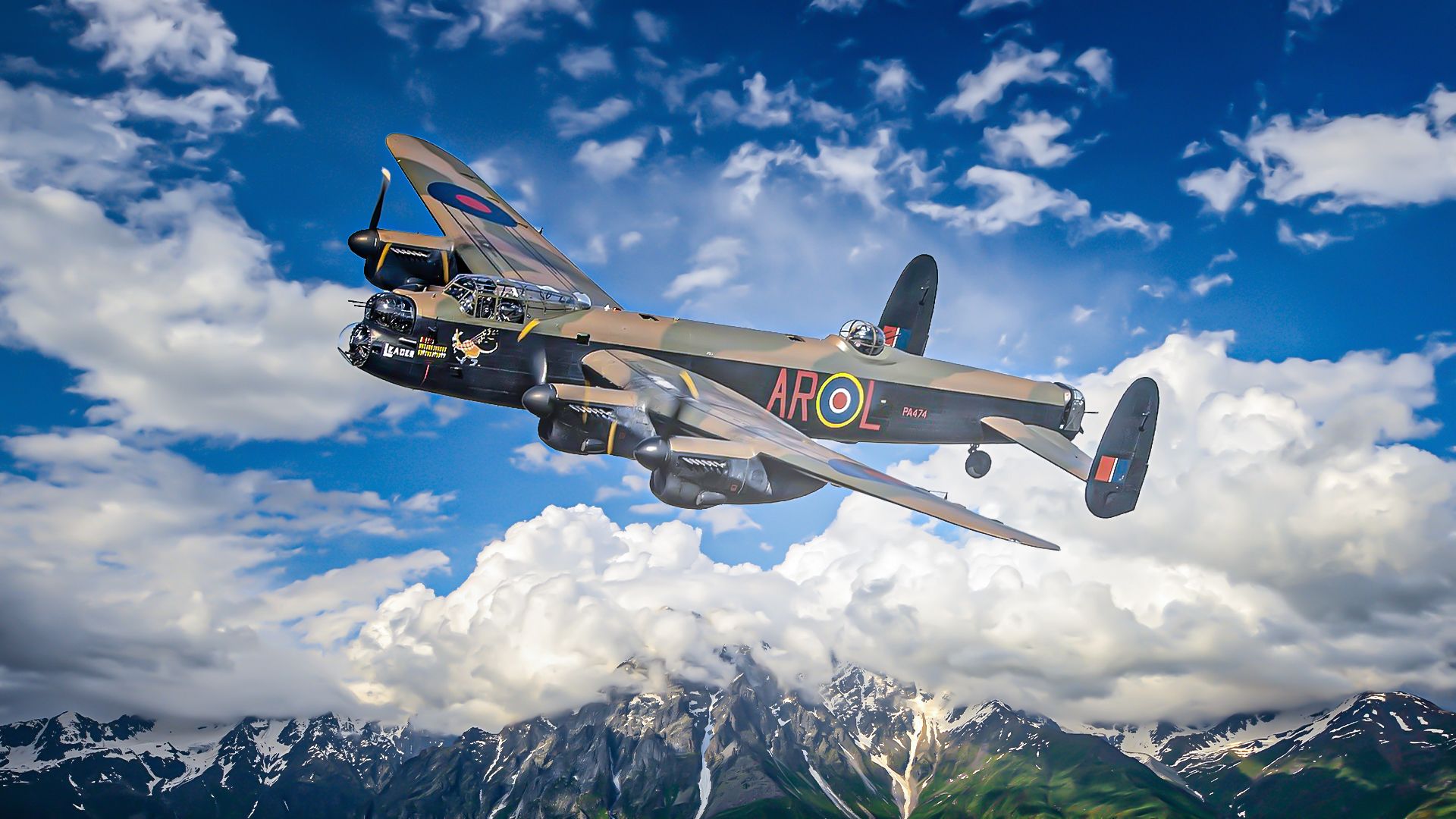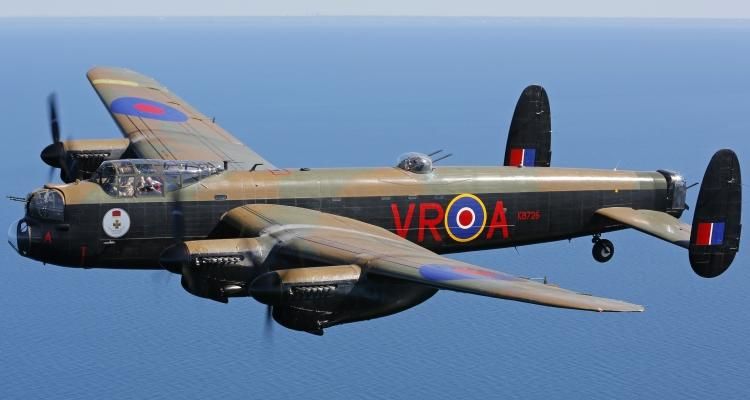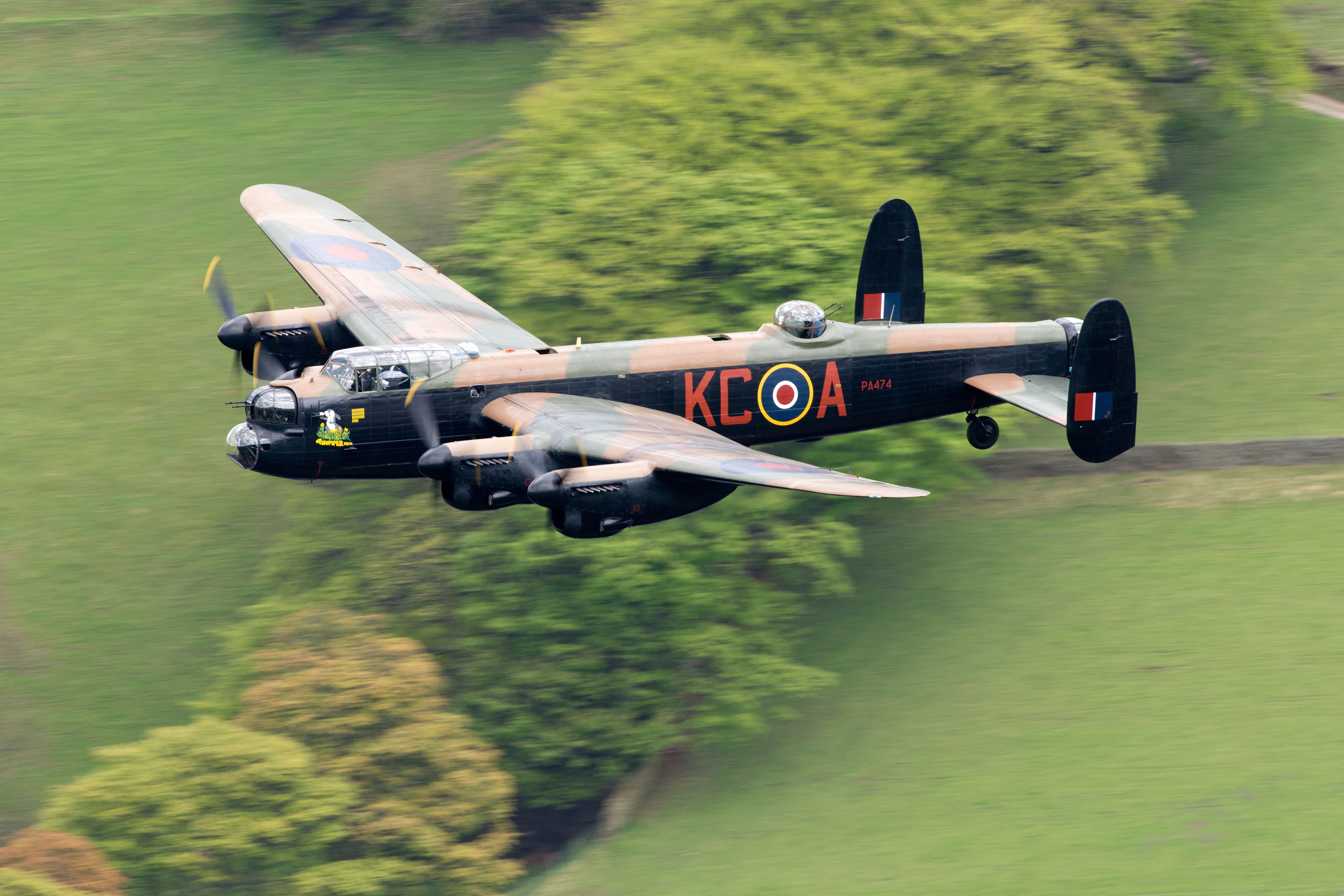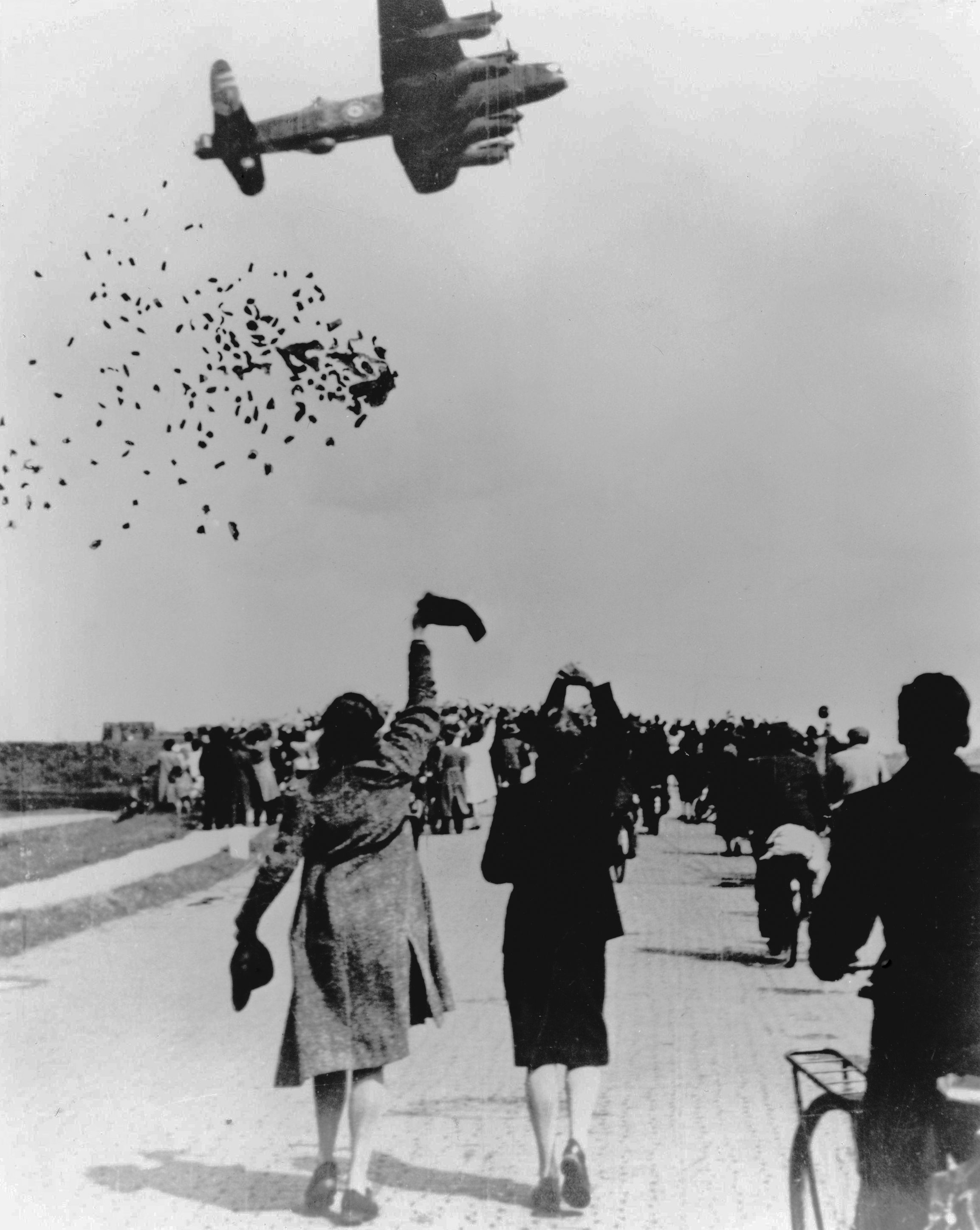Summary
- Only two airworthy Lancaster bombers remain one in the UK and one in Canada.
- The Lancaster played a crucial role in humanitarian and military operations during WWII.
- Developed from Manchester, the Lancaster was instrumental in bombing raids and aiding famine relief efforts.
The Avro Lancaster was an iconic bomber from World War II. Of the 7,377 examples produced, just 17 Lancasters have stood the test of time. However, today, only two of these majestic aircraft remain airworthy, showcasing the endurance and legacy of this historic bomber.
The first still airworthy Lancaster is stationed with the Battle of Britain Memorial Flight (BBMF) in Lincolnshire, UK. Across the Atlantic, the second airworthy Lancaster, FM213, resides at the Canadian Warplane Heritage Museum in Ontario, Canada.
How the Avro Lancaster was born
During the last years of the 30s, the British aircraft manufacturer Avro (founded in 1910 by Alliott Verdon Roe in Manchester) developed the Avro 679 Manchester, a twin-engine heavy bomber, to meet the British Air Ministry’s requirements for a medium bomber for ‘worldwide use’ which could carry a torpedo internally and make shallow dive-bombing attacks.
The Manchester embarked on its maiden flight on July 25th, 1939, and entered service in November 1940. Despite being operated by the RAF and RCAF, it was deemed an operational failure due to its underpowered and unreliable Rolls-Royce Vulture engines. So, the Royal Air Force needed a new medium bomber for air warfare during World War II.
The British aircraft manufacturer created the Avro Lancaster, which was developed from Avro 679 Manchester. The Lancaster had its maiden flight in early 1941 and was put into service in 1942, while the Manchester bomber was retired from active use. In this way, the Avro Lancaster Bomber became the British Command’s primary heavy bomber for attacks on Nazi Germany since its superior performance and handling quickly outshone other allied four-engined bombers in Europe and completed 21 missions before being lost.
Avro Lancaster quick facts and specs
- Crew: Seven
- Length: 69 ft 4 in (21.13 m)
- Wingspan: 102 ft 0 in (31.09 m)
- Height: 20 ft 6 in (6.25 m)
- Max takeoff weight: 68,000 lb (30,844 kg)
- Powerplant: 4 × Rolls-Royce Merlin XX V-12 liquid-cooled piston engines, 1,280 hp (950 kW) each
Building and operating Lancaster required a massive effort: six companies produced 7,377 units across ten factories on two continents, with over 1.1 million people employed by 920 companies at the production peak. Its operation involved more service personnel than any other British aircraft in history.
It was designed to carry a maximum bomb load of up to 18,000 pounds, with the ability to increase this to 22,000 pounds for special missions. Its size is notable, with a wingspan of 102 feet, a length of 69 feet 4 inches, and a height of 20 feet 6 inches, encompassing a wing area of 1,300 square feet. Initially, the tare weight stood at 37,330 pounds, but its maximum takeoff weight saw incremental increases—from 63,000 pounds in November 1942 to 65,000 pounds by May 1944, eventually reaching 72,000 pounds in February 1945.
Photo: Canadian Warplane Heritage Museum
Capable of hitting a peak speed of 275 mph at 15,000 feet, this aircraft could comfortably cruise at 200 mph at the same altitude. It boasted a service ceiling of 25,000 feet and a steady climb rate of 250 feet per minute. Its range was influenced by the bomb load it carried: with 7,000 pounds of bombs, it could cover 2,350 miles; this dropped to 1,730 miles with a 12,000-pound payload and further reduced to 1,550 miles when fully laden with 22,000 pounds of ordinance.
The crew of the Avro Lancaster played pivotal roles in its operations. The pilot led the team, with the Flight Engineer overseeing engine and system functions. The navigator was responsible for navigation, while the Bomb Aimer, who doubled as the front gunner, took charge of bomb targeting and release. The Wireless Operator managed communications. The aircraft’s defense was bolstered by a Mid-Upper Gunner and a Rear Gunner, who protected against attacks from above and the rear.
Photo: Peter R Foster IDMA | Shutterstock
Initially, the Lancaster’s seven-member crew did not include a Radar Operator. However, as World War II unfolded and technology advanced, some of these bombers were equipped with state-of-the-art radar systems for enhanced navigation and targeting, especially beneficial for night missions and specialized operations.
The Grand Slam bomb
- Maximum speed: 282 mph (454 km/h, 245 kn) at 63,000 lb (28,576 kg) and 13,000 ft (4,000 m) altitude
- Cruise speed: 200 mph (320 km/h, 170 kn)
- Range: 2,530 mi (4,070 km, 2,200 NM)
- Service ceiling: 21,400 ft (6,500 m) at 63,000 lb (29,000 kg)
Special Avro Lancaster bombers, modified with more potent engines and structures, were the only aircraft at the time capable of carrying the Grand Slam, a 22,000 lb (9,979 kg) earthquake bomb, albeit with limited maneuverability.
This bomb, made with a casing made from chrome-molybdenum alloy steel and a high charge-to-weight ratio, was the most potent conventional bomb of the Second World War. It carried 9,000 lbs (4,082 kg) of explosives with a 13,000 lb (5,897 kg) yield and was developed by British engineer Barnes Wallis to target German structures more effectively than previous bombs during WWII.
According to the Royal Air Force Museum,
“The Lancaster’s operational career is littered with impressive statistics, some are set out below, but it is worth remembering that the average age of the seven-man crew was only 22 years. They endured danger and discomfort and many showed great courage in continuing to fly knowing the odds against survival were high. Bomber Command suffered the highest casualty rate of any branch of the British services in World War Two.”
Between March and April 1945, 42 Grand Slams were dropped on Germany by Avro Lancasters, designed to penetrate soft ground and cause subsidence, thus avoiding mass civilian casualties and hastening the end of German resistance.
Military and humanitarian operations
The Lancaster played a crucial role in the war. Participated in over 156,000 raids (dropping millions of bombs), including operations like the famous Dam Busters raid, officially called Operation Chastise, executed by 617 Squadron RAF on 16/17 May 1943, targeting German dams with ‘bouncing bombs,’ designed to skip over water to evade obstacles like torpedo nets, enabling controlled speed and detonation timing like a naval depth charge.
RAF Lancasters also participated in Operation Manna and Chowhound, Allied humanitarian efforts to alleviate famine in the German-occupied Netherlands at the end of WWII. They dropped over 11,000 tonnes of food in late April and early May 1945.
British, Australian, Canadian, New Zealand, Polish, and US air forces participated, with German acquiescence. Following these airdrops, Operation Faust supplemented relief with 200 Allied trucks delivering food directly to Rhenen behind German lines starting May 2nd.
The Lancaster legacy around the world
- PA474: operated by the Battle of Britain Memorial Flight, RAF Coningsby, Lincolnshire, UK
- FM213: “Mynarski Memorial Lancaster,” operated by the Canadian Warplane Heritage Museum, Hamilton, Ontario, Canada.
The Royal Air Force confirms only two airworthy Lancaster bombers are left worldwide. Europe’s only airworthy Lancaster is stationed in Lincolnshire, UK. This Lancaster, PA474, is a centerpiece of the Battle of Britain Memorial Flight (BBMF), serving as a flying memorial to those who served and lost their lives during World War II. It participates in various air shows and commemorative events across the UK and Europe, allowing spectators to witness a piece of history in the skies.
At the Lincs Aviation Heritage Centre, there is also NX611, ‘Just Jane,’ which can be taxied but is not airworthy.
The Canadian Warplane Heritage Museum in Ontario, Canada, houses the second airworthy Lancaster with the plate number FM213. This aircraft, restored and maintained in flying condition, symbolizes Canada’s contribution to the war effort and is a tribute to the Canadian airmen who served with the Royal Canadian Air Force during the conflict.
Like its British counterpart, FM213 participates in air shows and commemorative flights, often crossing the ocean to join forces with PA474 in joint displays, underscoring the enduring bond between the two nations forged during the war. Despite only two Lancasters being airworthy, several others exist in various states of preservation around the globe, from static museum displays to undergoing restoration projects in France, the USA, Australia, and New Zealand.




